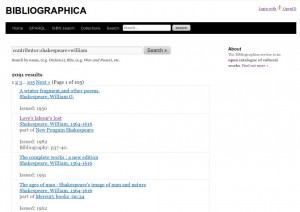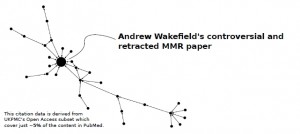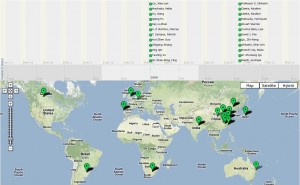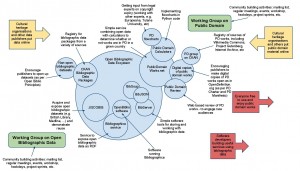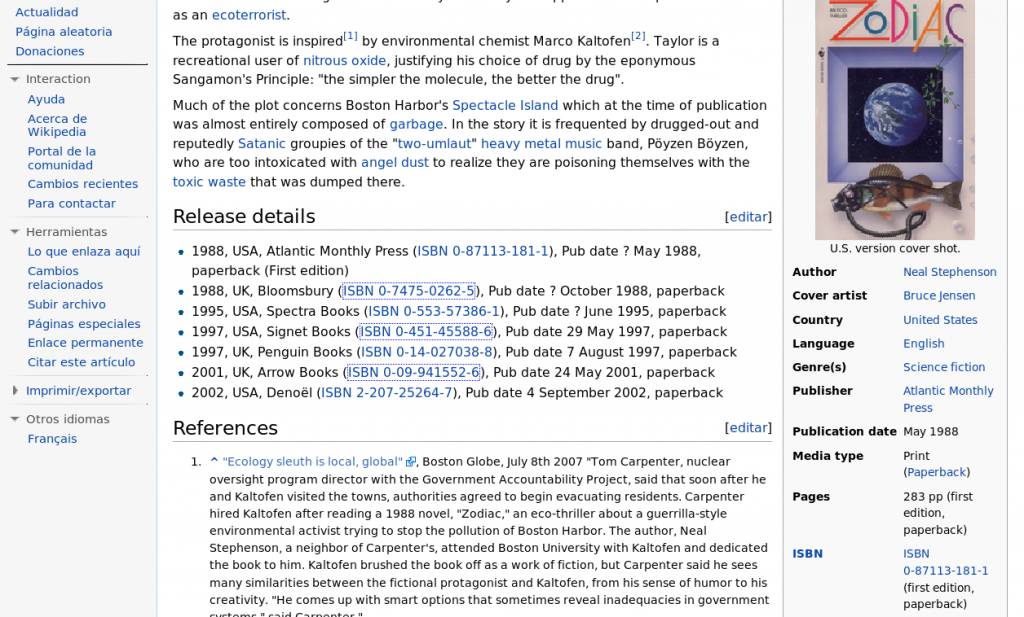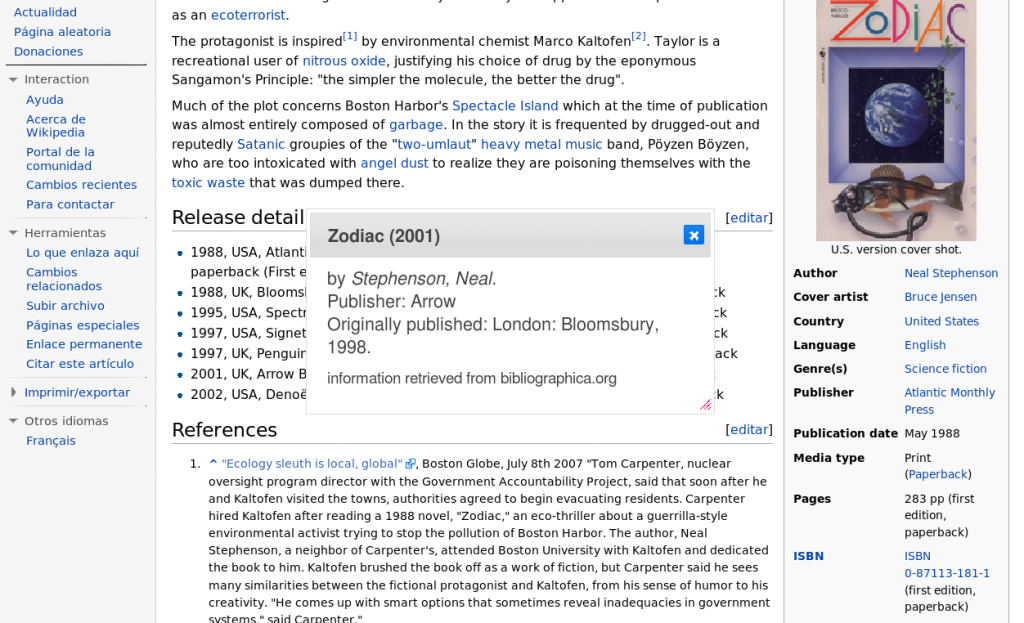Unfortunately, you have to deal with copyright and neighbouring rights like the European sui generis database right when you want to liberate data, be it bibliographic data or other data. In recent discussions about bibliographies and copyright, Peter Murray-Rust several times raised the point that (at least some) publishers consider a bibliography, i.e. the list of references at the end of a reasearch article or a monograph, as copyrighted. (N.B., we don’t talk about specialized bibliographies here which aren’t part of an academic publication.)
Assuming this to be a fact, it would mean that you couldn’t copy bibliographies, reuse, publish and distribute them without prior consent by the copyright holder (which often is the publisher). Peter’s view of bibliographies and copyright surprised me as for all I have heard regarding German law, bibliographies aren’t copyrightable at all. This post provides the background for my conviction.
Currently, there are two main sources regarding this topic:
- a letter (pdf) by the German Publishers and Booksellers Association (“Börsenverein des Deutschen Buchhandels”) from July 11th, 2007 and
- a legal guide (pdf) for libraries regarding the digitization of public domain books as well as public domain parts of otherwise copyrighted books.
I will translate the letter and summarize the relevant information in the legal guide.
The German Publishers and Booksellers Association’s letter
The letter is adressed to Gabriele Beger, Director of the German Library Association (dbv) and was written in the context of discussions about enriching library catalogues with additional information like indexes, covers etc. (usually called “Catalogue Enrichment”). Here my try on a translation of the letter:
++++begin translation+++
Dear Prof. Dr. Gabriele Beger,
in the last few months discussions have taken place between the German National Library, the German Library Association and the German Publishers and Booksellers Association about the enrichment of library catalogues with different data that goes beyond mere bibliographic information. You’ve asked the Publishers and Booksellers Association to examine for its member publishers which possible addenda are unproblematic regarding copyright law.
After examination by our legal department I can inform you today, that there are no legal objections to indexing of the following data for catalogue enrichment purposes:
- title page (not book cover)
- table of contents
- list of tables
- table of figures
- bibliography
- subject index
- index of persons
- places index
Also, the Publishers and Booksellers Association for his member publishers wants to enable the use of
- covertext and blurb
These texts will often be copyrighted but normally the publishers own the rights. Because these short-descriptions are advertisement-like and in no way replace reading the book we ensure you that we will inform our member publishers that we see no objections against indexing this information in library catalogues.
Unfortunately, this doesn’t apply to the summaries of academic books. Such abstracts in many cases are made freely accessible by the publishers with authors’ consent. But not all authors give their assent to this practice so that publishers have to take into account their legal duties to respect authors’ rights. However, in order to enable public access to abstracts of scientific books in library catalogues we will try
to work towards a change in publisher’s contract in the academic field.
Also, publishers can’t generally permit catalogue enrichment with cover scans. For the creation of book covers very often copyrighted illustrations, photos etc. are used which the publisher has to seek a license agreement for with the rightsholder (…). In these cases often only few distinct rights are conferred. Therefore, sometimes even the publisher himself often doesn’t own the rights to display cover scans in databases.
(…)
++++end translation+++
Obviously, this letter only adresses content of mongraphies but there is nothing to be said against this also applying to journal articles.
It has to be made clear that the practice of catalogue enrichment means scanning printed books and adding the scans (and/or the OCRed text) to search tools. The scraping of publisher’s websites for this data wasn’t part of the discussion. But it is made sufficiently clear that single bibliographies aren’t copyrighted. Of course, scraping websites and aggregating many bibliographies from one source would probably conflict with European database right – as does large-scale scraping of single bibliographic records.
Legal guide to the digitization of public domain material
While the above letter only states that bibliographies and other indexes aren’t subject to copyright in Germany, the legal guide about digitization of public domain works by libraries also provides background for this view. The guide was published by the Northrhine-Westfalian Library Service Center (hbz). It is written on behalf of the hbz by Dr. Till Kreutzer, a lawyer with focus on copyright and related rights and irights.info editor.
The guide not only covers complete works which are in the public domain because of expired copyright but also public domain parts of otherwise copyrighted works. Concerning these, Till Kreutzer states that indexes like bibliographies, tables of figures, tables of content, name and subject indexes and indexes of tables normally are not copyrighted (in Germany) and can thus mostly be digitized without asking for permission.
Title page and covers
In section 2.3 the guide covers public domain parts of otherwise copyrighted works. Regarding the title page he writes on p. 12:
The title page normally isn’t copyrighted. Usually the title page only contains the work’s title and bibliographic information about author and publisher. These elements don’t reach the necessary level of originality for copyright protection.
In the following paragraph he also makes clear that covers may display copyrighted material so that they are often copyrighted.
Indexes
Till Kreutzer states that most indexes like bibliographies, tables of figures, tables of content, name and subject indexes and indexes of tables aren’t copyrightable because
- They are lists of items which aren’t copyrightable by themselves nd
- The creation of an index, i.e. the collection of individual items (headings, names, figure titles etc.) into an index, lacks the necessary level of originality, it isn’t a creative act and actually is mostly done automatically.
He concludes that tables of content and other indexes can be digitized and published without the rightsholder’s consent regardless of whether the underlying work is copyrighted or not.

